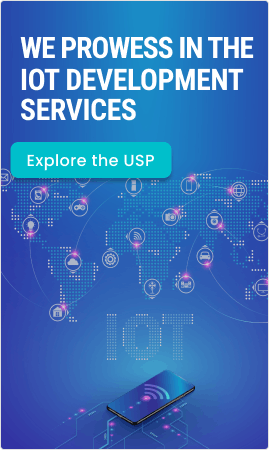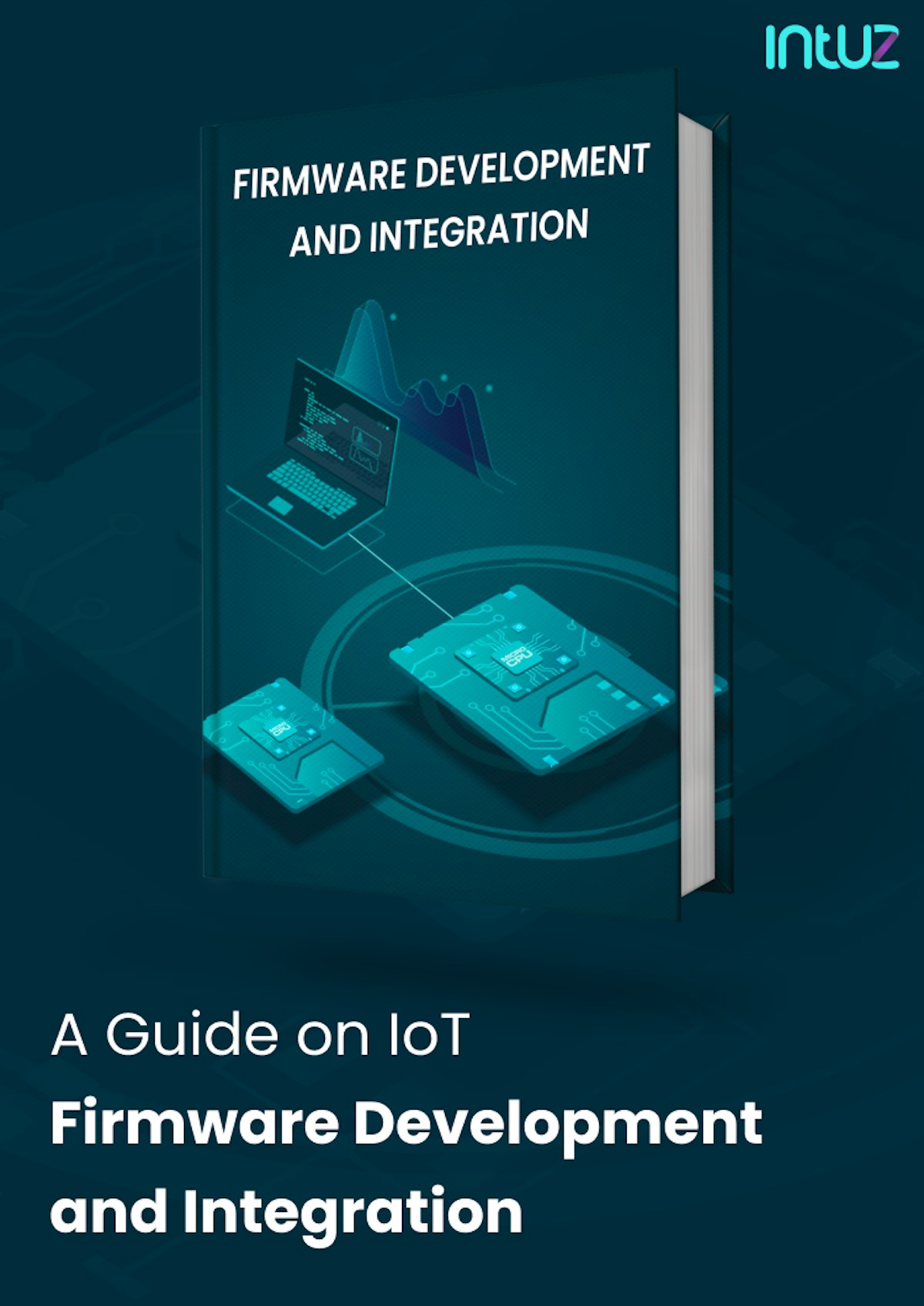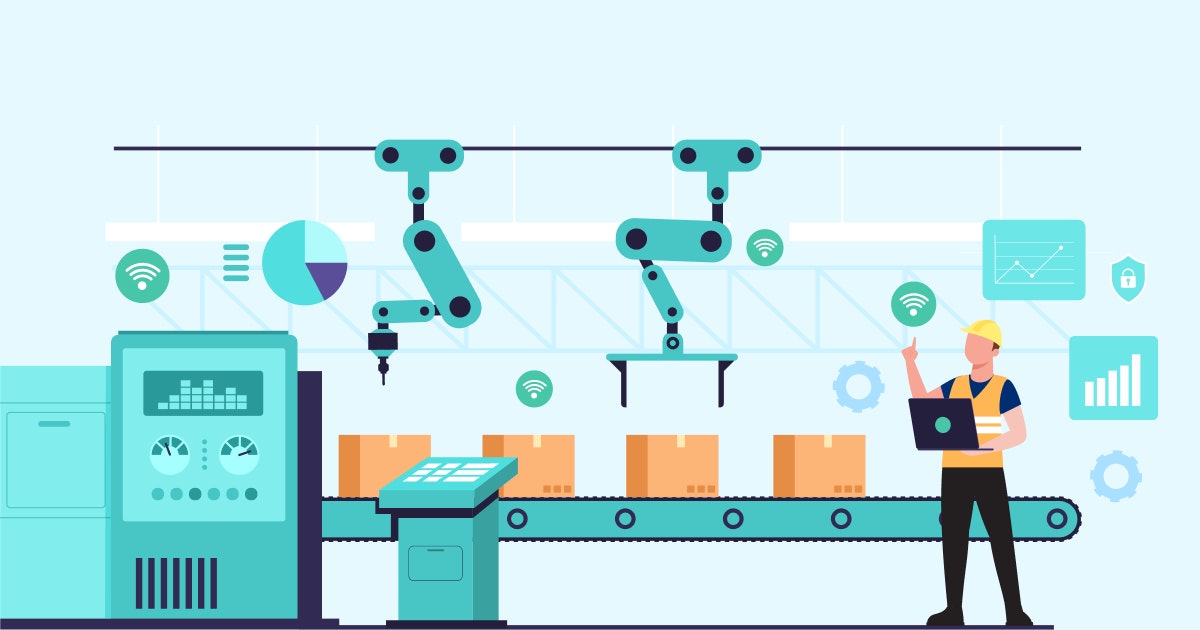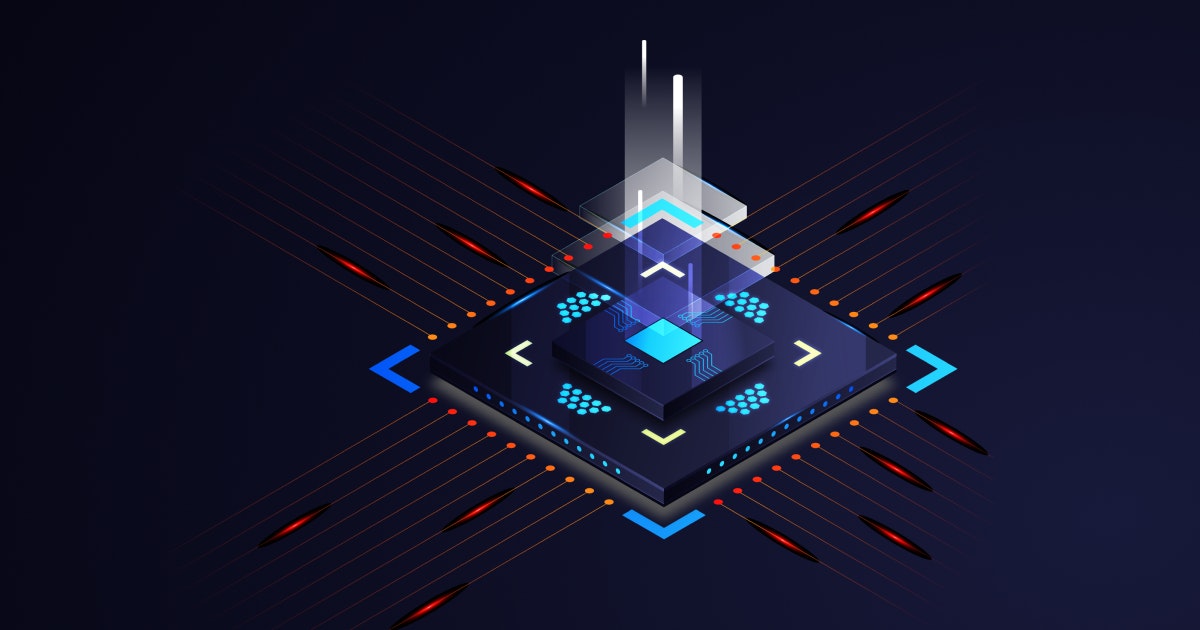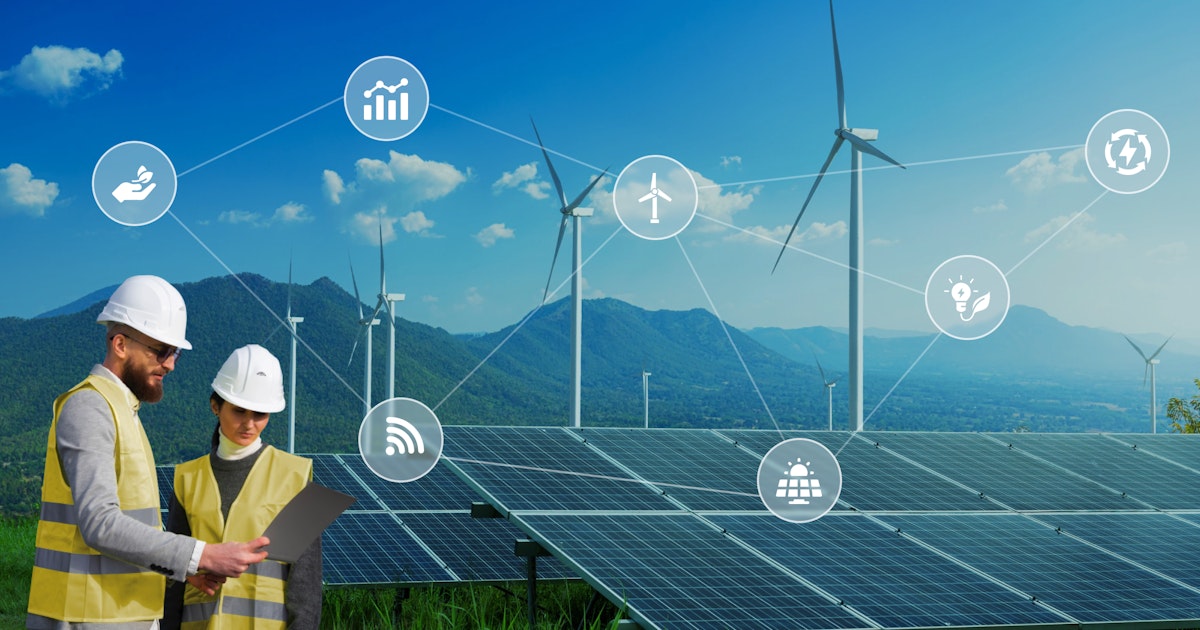Table Of Content
IoT has carved a niche for itself in every aspect of our daily lives — the cities we live in, the vehicles we drive, how we take care of ourselves, the way we shop, the way we work, and so on. IoT is not just the future, it is our present.
Look around yourself and you will find sensors that detect, measure, and exchange data in some form or the other. Besides, business owners and public offices are already benefiting from gathering data about community residents and the customer experience.
We hope to see more opportunities to come out of this extraordinary innovation in days to come. However, it is indeed a matter of great power to collect and process data in real-time. And with great power comes great responsibility.
You should, therefore, be able to approach data collection and management responsibly by building reliable and safe app architectures.
The significance of data collection in IoT
IoT is described as a network of "things" or physical objects interconnected via the internet and exchanging data through IoT gateways with in-built sensors.
For example, smartwatches are equipped with various sensors and wireless protocols powerful enough to run deep learning algorithms. Applications send sensor data from these wearable devices through the IoT cloud. You will find many fitness and health watches at play these days.
Similarly, a closed IoT environment (for instance, an automotive company) comprises multiple devices or objects (usually the ones that need monitoring) that continuously stream information to a remote control system — processing and manipulating this data for better decisions.
The company may want to reduce unplanned downtime by monitoring its assets and scheduling maintenance before breaking down.
Traditionally, a maintenance officer would be sent out to the site to manually inspect equipment such as a CNC machine and then plan out the course of action. However, what they really need to do is build an IoT-based predictive maintenance strategy.
With IoT, the company can install sensors that track vital asset parameters like temperature and vibrations and send this data to a remote AI-based diagnostic platform to detect anomalies in asset parameters and predict when a maintenance task will be most needed.
Types of data IoT devices collect
It is evident that data is the keyword in IoT. Businesses that leverage IoT technology want to acquire more data and utilize it fully to generate maximum insights. Data sets in an IoT system flow in three phases:
- Data is captured at the source through sensors (which are either inbuilt like in a robot or through external sensors installed on the connected device being monitored).
- Data is then transmitted to a system for storage and organization purposes.
- Data is consumed and analyzed by the system to generate actionable insights.
Although the process is straightforward, the type of data IoT devices collect is often met with intrigue. Adding to that, here are three examples to know about:
1. Location data
Think of it as an indoor global positioning system. Rather than directing you to a specific location, this data set enables you to track packages, equipment, and pallets in real-time. For instance, farmers can track equipment during harvesting season. Or, at the consumer level, you can use location data for tracking a lost phone, laptop, or even your keys.
2. Status data
This is the most basic, raw, and prevalent type of IoT data is status data. It is collected in its most natural format, transformed into a consumable guise, and then used for more complex analysis.
3. Automation data
Even in the 2020s, connected device automation is met with skepticism. However, whether it is enabling automatic settings on a thermostat or automating light switches in an office, it does bring forth a lot of convenience to the end customers.
How data collection works
Different layers work together to make data collection within an IoT system possible. These can be broken down into five main layers:
1. Device layer
The devices that relay data to each other and the event processing layer create the device layer of the IoT architecture. These devices either have sensors embedded within them or have external sensors attached to them, which track and transmit the connected device data.
2. Communication layer
This layer forms the network that facilitates communication between devices and systems in the IoT architecture. Devices communicate using protocols such as HTTP/HTTPS, MQTT, and CoAP.
3. IT edge layer
The edge layer comprises the device hardware, the installed operating system that runs and manages processes on the device, and the device firmware, which is coded onto the device that gives it working instructions. The edge layer is responsible for sensing activities.
4. Event processing layer
This layer comprises systems that store all the data transmitted from the IoT devices, clean this data, organize it, manipulate it, and analyze it to generate insights.
An example is an AI-based diagnostic platform used in asset maintenance. This forms the backend of the IoT system, the location where all the data is stored and prepared for the front-end system to use and deliver as insights to users.
5. Client communication layer
This layer makes the data and insights available to users of the IoT system. The data collected and insights generated can be viewed and used by decision-makers through front-end systems in this layer.
Quality Control In The Age Of IoT Development Services
A Quick GlanceProcessing IoT data
It is obvious you must process the massive amounts of data transmitted between IoT sensors and applications before any insights can be gleaned from them. However, the data often comes from different sources and formats.
There are four things you must undertake before applying any type of analytical technique to the data sets, including:
- Convert the data into a standard format compatible with your application.
- Create a backup of the newly formatted data sets.
- Remove or delete any outdated, repetitive, or unwanted data sets to enhance accuracy.
- Include additional structured or unstructured data from other sources for enriching your current data sets.
The event processing layer stores this data, cleans it and analyzes it to generate insights. These insights are made available to users via front-end systems and dashboards on the client communication layer.
Streaming IoT data
In a typical IoT ecosystem, every event creates data captured by sensors — either in-built or installed externally, converted into a uniform format, and then transmitted via protocols like HTTP/HTTPS, MQTT, CoAP.
These protocols support fetching updates or other information from the IoT device to transmit to a given central destination for actual processing. However, in this phase, one has to decide how the data sets are aggregated and stored in the future.
This depends on how the IoT data is to be consumed. You can select an approach and determine whether the data should be sent in batches or real-time. You also need to confirm the order in which data points should be created for accurate analysis.
Putting this into perspective, data collection in an IoT architecture starts with the devices with an OS and firmware installed to define their working.
Storing IoT data
Using real-time data ensures maximum accuracy. That is because the approach guarantees access to complete data generated by every IoT device. However, this means handling enormous volumes of incoming data.
Moreover, putting the proper timestamp for sorting data sourced from different IoT devices is challenging. One should refer to systems that can accommodate the volume and speed at which the IoT data reaches the server.
However, the frequency of data collection must be backed by a clear rationale. How often sensors capture it and transmit it to the storage system varies on business needs.
This is an important parameter to decide on because platforms and sensors incorporated within the IoT architecture will base on the frequency of data collection chosen.
Otherwise, this can severely impact the cloud systems and hamper both the computational and network resources required to keep the IoT data inflow.
For example, data can be collected and transmitted in real-time where the frequency of data collection is high or in periods and batches where the frequency of data collection is low.
Therefore, collecting data in real-time makes it highly precise and immediately usable. However, this also means the IoT system will constantly generate massive volumes of data that need to be immediately processed.
For that, you will have to implement a platform capable of ingesting vast volumes of data. You could choose to invest in acquiring a high-performance solution because they want the frequency of data collection to be high to have access to real-time data.
A popular use case for data collection and transmission involves security issues. Since businesses want to monitor such devices in real-time, they can quickly use the data and take proactive action. You can have room for delays.
The platform approach
If you are planning to analyze the incoming data directly, you need mobile devices with unique energy consumption, latency, and accuracy requirements. You require a platform capable of ingesting data from various sources in real-time.
This platform should have the bandwidth to respond to temporary connectivity issues quickly. That may include outage, server failure, or lost connection. It also helps you avoid data loss. Therefore, you must do a risk assessment to avoid hampering the outcome based on that data.
Choosing the suitable method of data collection is, therefore, essential and can be done based on the end goal, or target, for data:
1. Target-driven approaches to data collection:
The approach taken for collecting and storing IoT data sets heavily depends on the target requirements of a given use case.
These include many data collection processes motivated by the requirements as varied as energy consumption, accurate data, privacy protection, response time, and so on.
You can reduce the volumes of collected IoT data sets by filtering, compression, interpretation, aggregation, and so on.
2. Data collection motivated by accuracy
In this data collection method, the frequency of data capture and transmission depends on the level of accuracy needed. Data precision is set as the critical parameter, and the frequency of data collection is decided based on what gives the business the desired accuracy.
3. Data collection motivated by the time criticality
In this strategy, the frequency is decided based on the time criticality of collection. A maximum delay value is fixed, which is considered as the maximum delay between two measurements. The timestamp associated with each reading is measured to ensure the sensors collect and transmit data within this delay value.
4. Data collection motivated by energy demands
In this data collection method, energy consumption is the main parameter and a critical factor in deciding the frequency of data collection.
Devices and sensors that generate, measure, and transmit data consume energy, so does the network, and so do the platforms in the event processing layer.
The higher the frequency of data capture, the higher is the energy consumption. In this method, the business fixes the level of accuracy needed and the acceptable amount of energy consumption. The frequency is set to satisfy both values.
5. Data collection motivated by privacy
In this strategy, the data’s collection method and frequency are driven by IoT security standards. The higher the frequency of data collection and transmission, the higher the chances for a data breach.
The chosen frequency is based on what level of security is needed. Additionally, when security is the primary factor for selecting a data collection strategy, noise is added to the collected data using differential privacy techniques to decrease security issues.
Challenges involved in data collection
Businesses may face many challenges in collecting quality and consistent data sets. To develop methods for improving data collection practices, it is essential to first identify the roadblocks in the data collection process. The following section discusses the common challenges you may face when collecting data from different IoT devices:
1. Strict data security standards
Depending on the industry, the data collected can be susceptible to fraud and scams and require strict security. For example, Internet of Medical Things (IoMT) devices collect sensitive patient information that is subject to strict scrutiny.
Because IoT data collection involves the collection of large volumes of data and the movement of data across devices and systems, there could be loopholes or vulnerabilities in the ecosystem that can pose a risk for the organization.
2. Lack of data privacy processes
In some cases, many IoT applications require personal user devices such as phones, laptop cameras, and mics to be a part of the ecosystem and collect the personal data of individuals (or end-customers).
Different laws protect data related to people, such as the EU's data protection law called GDPR or HIPAA — a US federal statute — that can make data privacy a challenge.
3. Complexity because of enormous data volumes
IoT mobile devices are projected to generate an estimated 79.4 zettabytes of data by 2025. This is not surprising given the vast number of interconnected devices within an IoT ecosystem. Storing, transmitting, and processing vast volumes of data is a considerable challenge.
Complete Guide for IoT Product Development Stages
Take a Tour4. Inconsistent data formats
Data in an IoT architecture is captured from many different devices. The result is unstructured data that must be timestamped, indexed, and correlated with other data sources to create consistency. Consistency in data is essential for event processors to deliver actionable insights for decision-making.
5. Incompatibility with IoT devices and apps
Since the devices within an IoT network are manufactured by different brands and are of different types, the architecture and protocols of these devices also differ. Ensuring all devices are compatible with the IoT sensors can sometimes be challenging. Compatibility issues further increase data complexity challenges.
Are you ready to collect IoT data efficiently?
Data is the lifeblood within an IoT system. The entire purpose of implementing IoT in a business is to acquire and use data more accurately. That is why data collection is the backbone of IoT.
Given its challenges and complexities, it is incredible to see evolving technological breakthroughs like advanced wireless technologies (5G networks), Big Data, compression engines, and AI help businesses overcome these obstacles.
By deploying machine learning, edge computing, and other advanced technologies, you should be able to find cost-effective and efficient ways to sift through the data sets and glean insights from them for the betterment of your business.
Industries stand to benefit exponentially from IoT via industrial devices, and decision-makers need to be more aware of how IoT works and should be implemented.
Consulting an IoT app development company is a prudent idea for businesses in the nascent stages of digital transformation.
Having one reliable partner will help you build a scalable and dependable IoT architecture for your project. The developers at Intuz are experienced in developing connected apps for energy, healthcare, smart homes, and other major sectors. Contact us to discuss your requirements.


